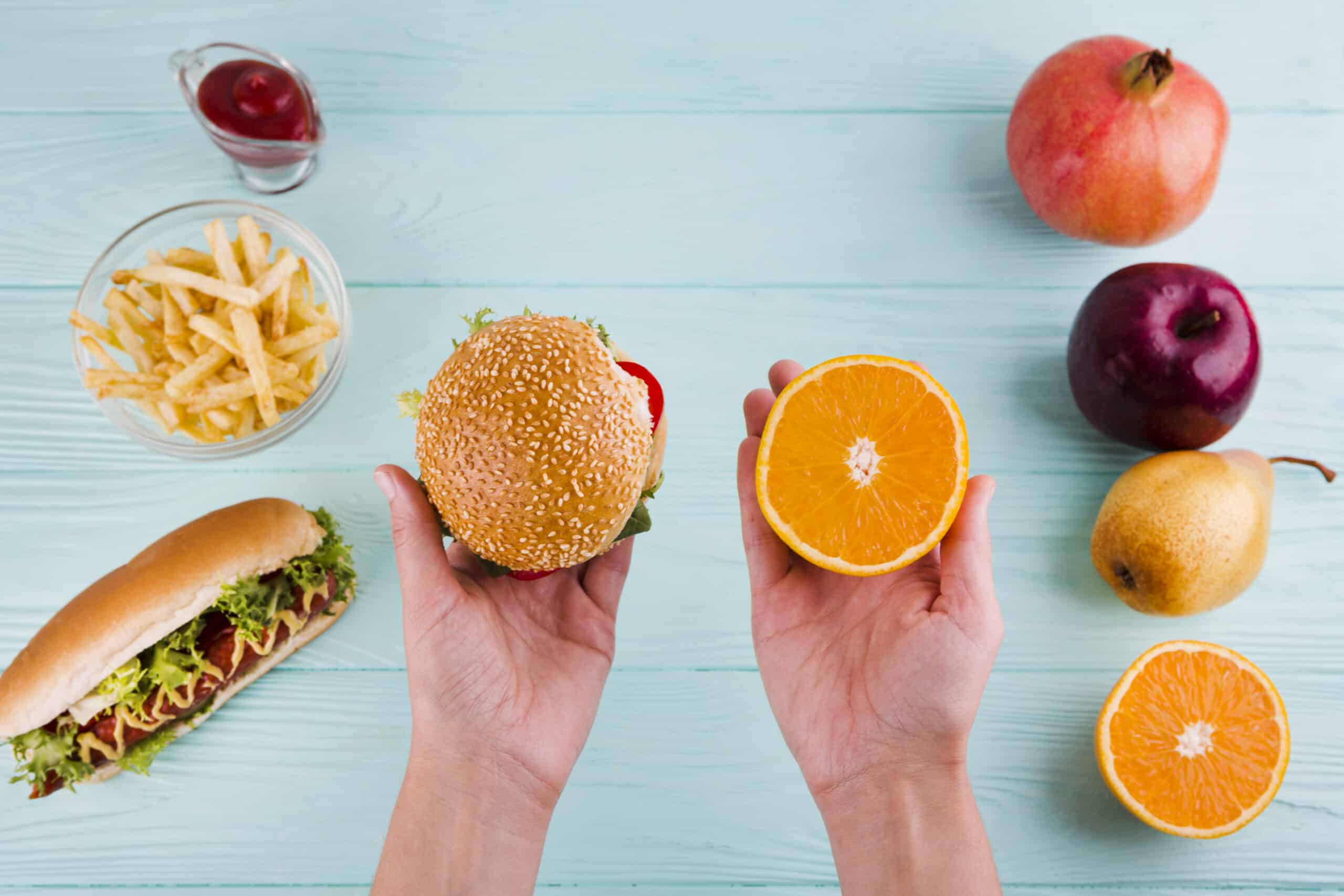A Journey to a Healthier You
If you’ve ever found yourself mindlessly munching on chips while watching TV, reaching for sugary snacks when stressed, or succumbing to the allure of fast food after a hectic day, you’re not alone. Unhealthy eating habits can sneak into our lives and take root, leading to a cycle that’s challenging to break. However, with dedication and a thoughtful approach, it’s possible to overcome these habits and pave the way to a healthier lifestyle.
Understanding the Roots of Unhealthy Eating
Before we embark on the journey of breaking unhealthy eating habits, it’s crucial to understand why we develop them in the first place. Often, these habits are linked to emotional triggers, stress, or even boredom. The allure of processed and sugary foods can provide a temporary escape or comfort, leading to a reliance on these choices.
The Perplexity of Emotional Eating: Unraveling the Connection
Emotional eating is a complex web that intertwines our feelings with our food choices. Burstiness in emotions can lead to impulsive decisions regarding what and how much we eat. Understanding the perplexity of emotional eating is the first step towards breaking free from its clutches.
Identifying Unhealthy Patterns
Recognizing your unhealthy eating patterns is a crucial aspect of the journey toward change. Burstiness in these patterns can make them challenging to identify, but keeping a food journal can help shed light on when and why you make certain choices.
Journaling: A Tool for Uncovering Patterns
Grab a notebook and start jotting down what you eat, when you eat, and how you feel during those times. This burstiness of information will reveal patterns and triggers, helping you identify the specific habits that need breaking.
Cultivating Mindful Eating
Breaking unhealthy eating habits involves a shift towards mindful eating. Instead of rushing through meals or mindlessly snacking, focus on the present moment. Engage your senses, savor each bite, and pay attention to your body’s hunger and fullness cues.
Mindful Eating: A Pause Amidst the Bustle
In a world filled with constant stimuli, cultivating mindful eating offers a moment of pause. By slowing down and appreciating each bite, you not only enjoy your food more but also become more attuned to your body’s signals.
Making Informed Food Choices
One of the keys to breaking unhealthy eating habits is making informed choices about the food you consume. Burstiness in nutritional knowledge can lead to confusion, but with a bit of research and understanding, you can navigate the aisles of the grocery store with confidence.
Nutrition Labels: Decoding the Information Burst
Take a moment to decode the nutrition labels on packaged foods. Look for hidden sugars, excessive sodium, and unhealthy fats. Understanding the burstiness of this information empowers you to make choices that align with your health goals.
Incorporating Variety and Balance
A common pitfall in breaking unhealthy eating habits is falling into rigid diets or extreme restrictions. Embrace the burstiness of variety and balance in your meals. Include a colorful array of fruits and vegetables, lean proteins, whole grains, and healthy fats.
The Balance Beam of Nutrition: Navigating the Bursts
Imagine your plate as a balance beam, with different food groups on each side. Striking the right balance ensures your body receives a burst of diverse nutrients, promoting overall health and well-being.
Creating Healthy Habits
Breaking old habits is challenging, but establishing new, healthier routines is equally important. Consistency is key, and small, manageable changes can lead to significant results over time.
Small Steps, Big Bursts: Building Habits Gradually
Rather than attempting drastic changes overnight, focus on small, sustainable shifts. Swap sugary drinks for water, incorporate a daily serving of vegetables, or opt for whole grains instead of refined carbohydrates. These small bursts of change accumulate over time, creating a foundation for lasting habits.
Seeking Support
Breaking unhealthy eating habits can be an isolating journey, but it doesn’t have to be. Seek support from friends, family, or even a professional nutritionist. The burstiness of shared experiences can provide motivation, accountability, and valuable insights.
Strength in Numbers: The Burst of Collective Effort
Share your goals with others and encourage them to join you on the path to healthier eating. Whether it’s exchanging recipes, going for a walk together, or simply checking in on each other’s progress, the burst of collective effort can make the journey more enjoyable and sustainable.
Overcoming Setbacks
In any journey, there are bound to be setbacks. The key is not to let them derail your progress. Acknowledge the burst of challenges, learn from them, and use setbacks as opportunities for growth.
Bouncing Back: The Burst of Resilience
Life is full of unexpected twists and turns, and your journey to break unhealthy eating habits is no exception. Approach setbacks with resilience, learn from them, and keep moving forward. The burst of growth often comes after overcoming challenges.
Celebrating Successes
Amidst the challenges, it’s essential to celebrate your successes, no matter how small. The burst of positivity from acknowledging your achievements reinforces the efforts you’ve put into breaking unhealthy eating habits.
Small Wins, Big Bursts: Acknowledging Progress
Whether it’s choosing a healthy snack over an unhealthy one or consistently incorporating more vegetables into your meals, celebrate these small wins. The burst of positive reinforcement strengthens your commitment to a healthier lifestyle.
A Culmination of Change: A Healthier You
As you navigate the burstiness of breaking unhealthy eating habits, remember that it’s a journey, not a destination. Embrace the process, be patient with yourself, and celebrate each step forward. Breaking free from unhealthy patterns is about creating sustainable habits that contribute to your overall well-being.
Conclusion
In the realm of health and wellness, breaking unhealthy eating habits is a significant milestone. The journey involves understanding the roots of these habits, identifying patterns, and cultivating mindful eating. Making informed food choices, incorporating variety and balance, and creating healthy habits contribute to a sustainable and positive transformation. Seek support, overcome setbacks with resilience, and celebrate your successes along the way. Remember, the burst of change is a continual process, and each step forward brings you closer to a healthier you.
FAQs (Frequently Asked Questions)
1. Can I break unhealthy eating habits without completely giving up my favorite foods?
Absolutely! The key is moderation and balance. You don’t have to completely eliminate your favorite treats; instead, focus on portion control and incorporating them into an overall healthy diet.
2. How long does it take to break unhealthy eating habits?
The timeframe varies for each person, but research suggests that forming new habits can take anywhere from 21 to 66 days. Be patient and stay committed to the process.
3. What role does stress play in unhealthy eating habits, and how can I manage it?
Stress often triggers unhealthy eating habits. Managing stress through activities like exercise, meditation, or hobbies can help. Seeking professional support, such as counseling, is also beneficial.
4. Is it necessary to count calories to break unhealthy eating habits?
While calorie counting can be a helpful tool for some, it’s not necessary for everyone. Focus on making nutrient-dense food choices, listening to your body’s hunger and fullness cues, and creating a balanced diet.
5. Can socializing and maintaining a social life be challenging when trying to break unhealthy eating habits?
Socializing can indeed pose challenges, but it’s entirely possible to navigate social events while prioritizing your health. Communicate your goals to friends and family, choose healthier options when available, and focus on the social aspect rather than just the food.





